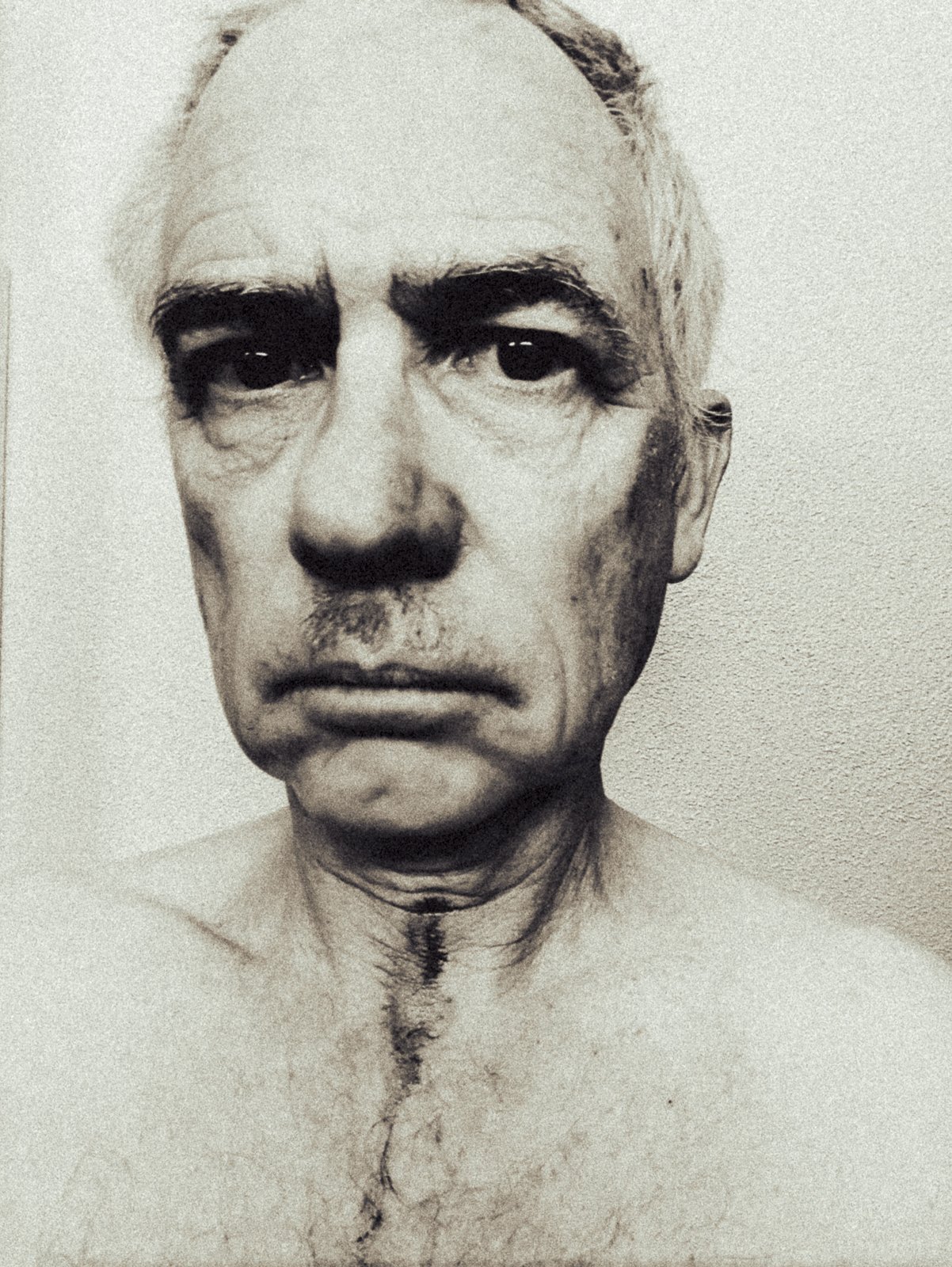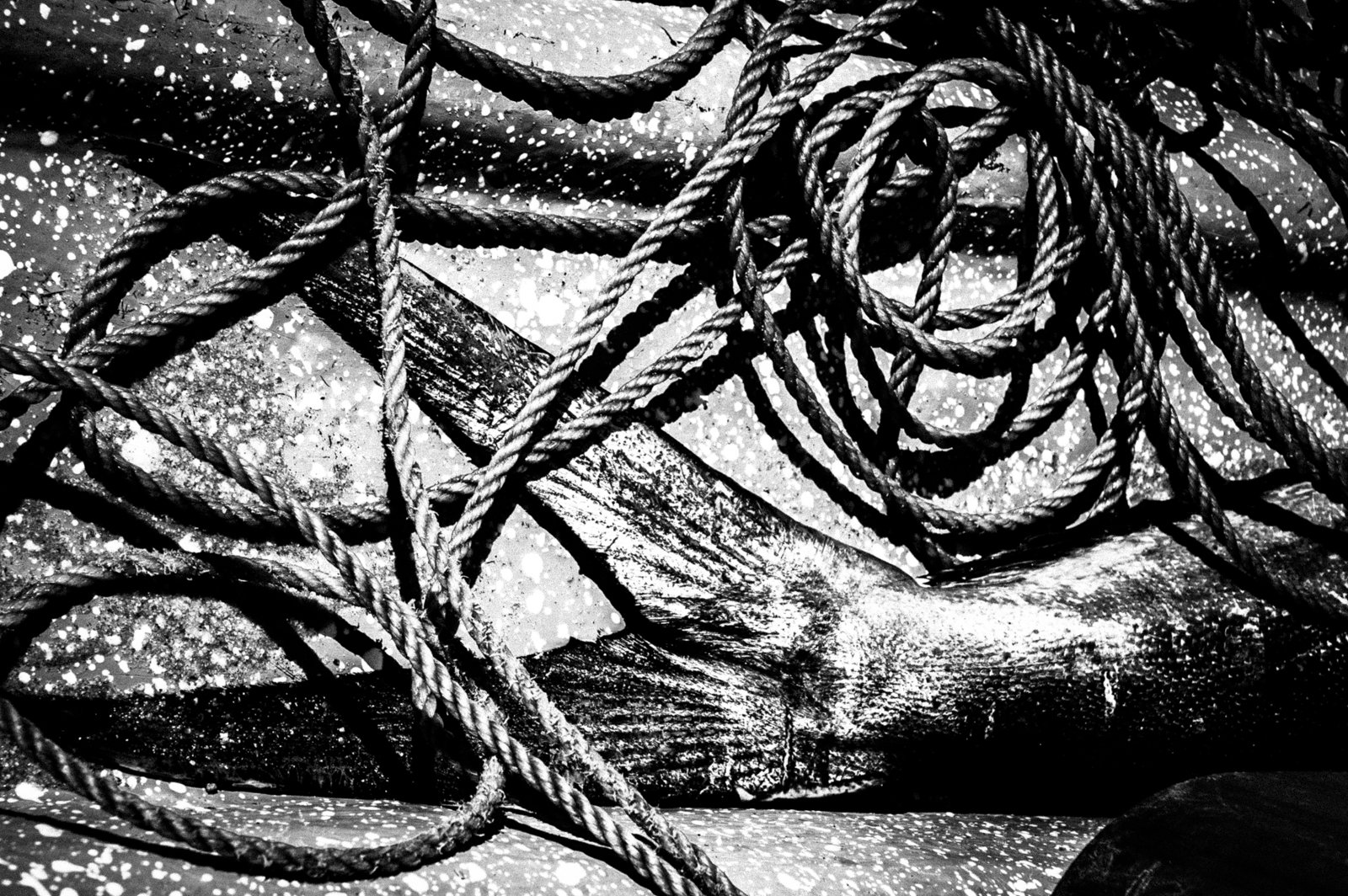
The image: a face.
Mine.
Unvarnished, unguarded.
Close-up
= close responsibility.
Not the art of beauty.
But of trace.
Of guilt, perhaps.
(Or memory,
if one wishes to soften it.)
To Photograph Is to Refuse Resignation
Matthias Koch, born in 1964 in Southern Germany, is an artist and photographer. His journey—which led him to live in Venezuela, Chile, and Mexico before settling in Ardèche—has forged a perspective marked by exile, one that turns toward the margins, instability, and what teeters on the edge.
Koch develops a free and unconventional photographic approach. For him, the image is not a tool for explanation, but an instrument for philosophical investigation and resistance to erasure, seeking to capture the world's silences.
His work revolves around the notion of Impermanence and the complex interaction between Humans, Space, and Time. Each shot emerges from a gesture of humble attention: a face in transformation, a fragile light, or a landscape steeped in memory.
Through his series—Metamorphosis, Todtnauberg, Figures of a World at Risk (or Figures d'un Monde en Sursis)—Matthias Koch traces a sensitive cartography of the ephemeral and the fragile. He explores this Unheimlichkeit, this "uncanny familiarity" that haunts his works, often in direct dialogue with thought. His recent collaboration with French philosopher Claude Molzino (notably on the work Figures d'un Monde en Sursis) fully positions his approach within a search for truth through art.
For Matthias Koch, photography is a singular way of inhabiting the world with humility, offering a privileged space for resonance, memory, and emotion
Matthias Koch, born in 1964 in Germany
You can find Fine Art Giclée prints, open and limited editions in our shop. Selected photos and stories are available for licensing on visura.
Contact: matthias.koch@pm.me

Book. Figures d'un monde en sursis (fr)
Figures d'un monde en sursis (Figures of a world on borrowed time) sets out to link Matthias Koch's photographs with Claude Molzino's philosophical analysis of them. This "time of the present" as perceived by the photographer's eye is in fact a set of snapshots of the "time of the end" that could be our era. In addition to the nuclearization of the world and the risk it represents for humankind, the over-exploitation of the planet poses an unprecedented threat to the living world.
After reflecting on the specificities of photographic art, the value of "black and white" and photography's relationship with time and reality, Claude Molzino draws primarily on the theses of Roland Barthes, Martin Heidegger and Günther Anders to demonstrate the usefulness of photographic art. Under the philosopher's pen, the latter is aptly seen as a revelation to man of his reprieve, in other words, as a means of alerting him to his responsibility for his own disappearance. At the risk of devastation and annihilation, beyond the historical episode of Hiroshima presented as the prelude to this new "era of humanicide", never, according to Claude Molzino, has "being [been so much] under the threat of non-being".
Exhibitions/prix 2026 La Ferme Aubenas, 2025 Prix cinéma de Gréoux-les-Bains, 2025 Chambre O7 Figures d’un Monde en Sursis, 2025 Galérie Agape, Aubenas, France
Print Publications 2024 logbook #1, 2019 Unheimlichkeit (Editions du Tanargue), épuisé, 2018 Figures d’un Monde en Sursis (L’Harmattan) Claude Molzino
Online Publications 2025 Les Cahiers du Tanargues Todtnauberg, 2025 L’Oeil de la Photographie Todtnauberg , 2025 Todtnauberg Mediapart, 2025 Kamira Metamorphosis, 2024 The eternal return, EOH, 2024 L’Oeil de la Photographie Metamorphosis, 2018 Eschaton, Edge of Humanity, 2017 Cimarron oder die rettende Flucht, Kwerfeldein, 2017 Abschied von zu Hause, Kwerfeldein, 2017 The Hard Decision Of Moving A Family Member To An Alzheimer’s Care Home, Edge of Humanity, 2017 Nothing stays like it is, Edge of Humanity, 2016 Eschatologie, Kwerfeldein, 2016 Metamorphosis oder alles wird gut, Kwerfeldein, 2016 Paris, Retrospektive 2015, Kwerfeldein, 2015 Mexikanischer Traum, Kwerfeldein, 2015 Mexikanischer Traum, Kwerfeldein,2015 Transit, Kwerfeldein
